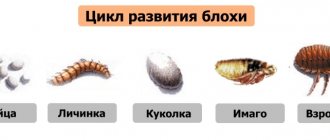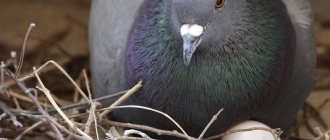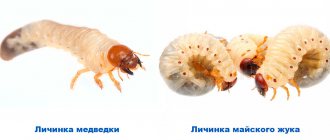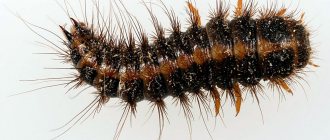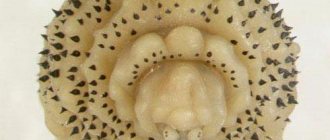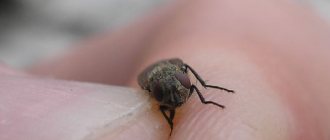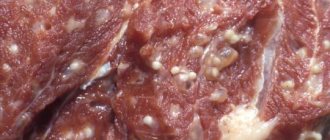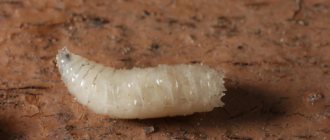Flies live all over the planet and plague people everywhere. The life of many species is inextricably linked with humans and their homes. Having discovered this annoying buzzing insect indoors, the vast majority have only one desire - to slam it down as soon as possible.
But in order to protect your home from the spread of flies and fight them more effectively, it is worth learning more about how they breed.
- 5.3.1 Maggot feeding
Reproduction of flies
The lifespan of a fly is very short, and during this short period the female must fulfill her main task - to leave as many offspring as possible. Flies are some of the most prolific creatures on the planet. And if every egg laid meant the appearance of a new individual soon, then very soon the Earth would be completely covered with flies.
Fortunately, natural selection exists. Not every egg produces a larva, and not every larva survives to the pupal stage. In addition, flies have quite a lot of natural enemies, and people constantly fight them.
Reproduction
Flies are heterosexual insects; mating requires two individuals - a male and a female. The process occurs once and after that the male’s seed is stored in the body of the female, who uses it throughout her life. After the insects mate, the female individual looks for the most suitable place to lay eggs, from which larvae will soon appear.
What they look like
The eggs of the fly are white, very small, oblong. When magnified, they look like grains of rice. Inside there is a nutritious yolk, due to which the fruit develops.
Immediately after leaving the eggs laid by the fly (at the initial stage of development), the body length of the maggot is approximately 2 mm. After 1 molt – 4-5 mm, after 2 – 8-9 mm, before pupation – 10-13 mm. Weighs about 22-27 g.
Adult fly larvae are small worms of a yellowish , gray or cream color, shiny, with a barely pronounced brown head, on which there is a mouth opening with retractable hooks. The back of the body is slightly rounded.
Upon closer inspection, you can see a depression and two dark dots in it - the respiratory plates. The body consists of 13 segments, 3 of which belong to the thoracic region, the rest to the abdominal region.
Maggots do not have normal (jointed) legs. Movement (locomotion) is ensured by false legs (outgrowths with cavities), crawling ridges (thickenings on the sides of the body), and contractions of the entire body.
The prepupa is the same color as the larva . As the puparia hardens, it darkens, eventually turning brown. The pupa looks like a small barrel with transverse circular notches.
Differences in reproduction in nature and in the home
The way flies reproduce has absolutely no effect on where it occurs. The process is the same for domestic and wild conditions. The only difference is the number of surviving offspring. On the one hand, flies are safer in the house, since there are no people nearby who feed on them, for example, frogs, birds, or predatory insects. In addition, there is usually something to eat in the house, so food is not a question either.
But on the other hand, people take various measures to get rid of insects at all stages of development. Therefore, despite the fertility of flies, few young individuals appear, and of those, most die.
Prevention
Before concluding our review, as a prelude to it, I would like to recall the basic rules for preventing the appearance of these unpleasant guests in our home.
In order not to attract flies and prevent them from breeding in the apartment, you must follow these rules, namely:
- keep the house clean;
- remove fruits and vegetables, as well as meat products, from open areas in a timely manner;
- promptly send everything that has accumulated in the trash can to recycling containers;
- use mosquito nets on windows;
- follow traditional methods of insect control.
OUR READERS RECOMMEND!
To get rid of insects, our readers recommend the Pest-Reject repeller
. The operation of the device is based on the technology of electromagnetic pulses and ultrasonic waves! Absolutely safe, environmentally friendly product for humans and pets. Read more here...
Features of the reproductive organ
The fly's reproductive organs are located in the abdomen. The female's reproductive organs are:
- ovaries;
- oviducts (paired and unpaired);
- vagina;
- spermatheca;
- accessory glands.
Structure
The ovaries are a collection of egg tubes, each of which is separated by a septum. Each compartment contains a follicle. The seminal receptacles are reservoirs, each of which is connected to the oviduct. It is here that the fertilization process occurs after mating. The accessory glands, which secrete a special secretion, are also connected to the oviduct. It is thanks to it that the eggs that the fly lays are fixed on the substrate.
Traditional methods
Advantages of folk remedies in the fight against flies: safety for humans and accessibility. The most familiar of them is mechanical. Insects are killed using a fly swatter (or rolled up newspaper). However, this method is tedious, especially without some skill. Yes, and there are traces of dead flies on the walls. But human resourcefulness knows no bounds: some people use a vacuum cleaner turned on at full power to fight flies.
Deception
If you take into account the life activity of flies, you can trick the insects into leaving the apartment. Here are two ways.
- Ventilation. Since the vital functions of winged pests “turn on” when the temperature rises above 15°C, you can thoroughly ventilate the apartment to force the “enemy” to leave the house.
- Blackout. Flies fly, which means they have the opportunity to get food only when it is light. Twilight forces insects to look for a more “friendly” habitat.
Flies are afraid of drafts, but at the same time they may not leave the apartment, but simply sit out in secluded corners. As soon as the windows are closed, the insects will make themselves known again.
"Aromatherapy"
There are odors that are extremely uncomfortable for flies. Diptera prefer to leave places that emit unpleasant odors. Here are three ways to help get rid of insects.
- Ethers. Do general cleaning using a solution of essential oils (two to three drops per liter of water) to wash walls, floors and cabinets. Flies cannot stand the smell of cloves, citronella, peppermint, eucalyptus, and lemongrass.
- Alcohol. Using a spray bottle, spray vodka in the room where the flies live.
- Seasonings. Grind a handful of dry clove buds in your palms and place in a vase or any bowl.
Insects do not like the smells of some plants. Therefore, it is useful to “settle” geraniums on the windowsill. It’s nice to have a pot of peppermint or basil at home: their leaves can also be used as aromatic seasonings. For those who are far from floriculture, there is also a way: hang “bouquets” of dried tansy, bay leaves, lavender or wormwood indoors.
To prevent flies from ruining your summer dinner on the veranda or in the gazebo, you can make a simple insect repeller. Cut a lemon in half, stick a few cloves into each part and place on the table.
Traps
To make a fly trap, you need to pour water or milk sweetened with sugar, honey or jam into a small jar. Fold a sheet of paper into a funnel shape and place it on the container with the base facing up so that it does not touch the solution. The flies will fly into the jar, but will not be able to get out. Here are two more ideas for indoor fly traps.
- Vinegar. Pour vinegar mixed with a small amount of dishwashing liquid into a small container, cover the container with a plastic bag, after making several holes in it.
- Sugar ribbon. Prepare a strong sugar solution, add honey or jam syrup. Cut strips of craft paper and soak in the mixture for several hours. Take it out, dry it, hang it in places where insects gather.
Poisonous mixtures
Flies can be poisoned. To do this, you need to prepare a poisonous mixture with an odor attractive to pests, pour it into saucers and place it in places where arthropods accumulate. Here are three options.
- Pepper mixture. Add hot pepper or ground black pepper to the sugar solution. After feasting on such a mixture, the insect will die in three to four days. This composition is more preferable, since it is safe for humans and animals.
- With formaldehyde. Combine water (125 ml) with milk and formalin (25 ml each) or dilute 30 ml of formalin in 40 ml of glycerin. Such mixtures are toxic to people and animals, so they should not be used in a home where there are children and pets.
- With saccharin. Combine honey and saccharin, soak a sheet of newspaper in the resulting mixture, and dry the paper. Place the workpiece on a plate and sprinkle with water.
Saving flowers
Indoor plants can become habitats for fruit flies. Three folk methods will help you get rid of flies in flowers. After using them, you need to wash the pots and trays with a solution of laundry soap or vinegar.
- Garlic irrigation. Finely chop the head of garlic and pour 600 ml of boiling water over the raw material, leave for three to four hours and pour the mixture over the indoor plants.
- Orange therapy. Place orange zest in flower pots.
- Soap spraying. Stir 20 g of grated laundry soap in a liter of warm water. Spray the plant with the solution.
Stages of development
Flies are insects with complete metamorphosis; their development cycle takes place in four stages:
- egg;
- larva;
- chrysalis;
- adult.
The duration of the development period of an insect from egg to young fly very much depends on the species and environmental conditions. The period varies from several days to several months.
Laying eggs
Shortly after mating, the female lays eggs. First, she looks for a suitable substance, that is, one where the hatched larvae can immediately find food. The fly searches for a place by smell, and when it finds it, it tests the substrate with its proboscis to make sure that it is really suitable for feeding the larvae.
The appearance and size of the eggs may vary slightly between species, but in general, fly eggs look like grains of rice. They are light, elongated, about 1 - 2 mm in size.
Where do flies lay their eggs?
The most suitable place for laying eggs is a secluded one, hidden from sunlight, with the presence of decomposing, preferably semi-liquid matter. Depending on the type of fly, laying can occur:
- for carrion;
- to animal or human excrement;
- for spoiled meat, fish, vegetables or fruits;
- on rotting wood;
- into cesspools or garbage pits.
Some types of flies lay eggs in open, festering wounds on the body of birds or animals. Some varieties lay in the wool or under the skin of animals, less often of humans.
How many eggs does a fly lay?
The number of eggs that a fly lays at one time and throughout its life depends on the species of the insect. If we consider the average indicators, then one clutch contains approximately 100 - 150 eggs. And over the course of its entire life, a fly can lay from 500 to 2,000 eggs.
Egg development process
After the female has laid her eggs, the process of forming a larva begins inside. The embryo develops due to the so-called “yolk”, that is, the nutrient located inside the egg. Gradually, the embryo increases in size and takes the form of a small larva. Most often, this process takes from 8 to 24 hours.
Larval development
The fly larva emerging from the egg looks like a light worm with a dark head. As soon as they appear, the larvae immediately begin to eat. Most often, they go deeper into the nutrient substance, where they grow, surviving several molts. This stage lasts from 3-4 to 25–30 days. During this time, the larva grows, gains weight, and most often changes color to a darker one. The size of the adult larva depends on the species, for example, the larva of a housefly grows to 1.1 - 1.3 mm.
Larvae
Maggot nutrition
The diet of maggots, that is, fly larvae, depends on the species and habitat. Larvae eat:
- feces;
- decaying flesh;
- rotting plants, vegetables, fruits;
- spoiled fish or meat.
Housefly larvae are polyphagous, meaning they eat almost everything from excrement and rotten meat to human food. Since fly larvae do not have a digestive system, food digestion occurs outside the body. To do this, the insect secretes a caustic substance that dissolves any organic matter, and then absorbs the resulting liquid mass.
What are the larvae called?
The name of the fly larva is well known to fishermen - maggots are an excellent bait. To breed them, a piece of spoiled meat is specially buried in the ground, from which a whole batch of worms is soon removed.
The name “maggot” comes from the word “dough” (dough that increases in size) - the larva grows so quickly. After maturation, a thin white worm appears from the fly egg, difficult to see with the naked eye. It lives and feeds in the same substrate where it was born. The process of gaining weight takes from 5 to 15 days. In favorable conditions, only 4 days are enough.
Pupa stage
When the larva has fully formed and grown, the pupal stage begins. The skin of the maggot hardens, forming a puparia - a kind of protective cover. Metamorphosis occurs within it. The tissues of the larva disintegrate, and the main organs and systems of the future imago are formed. Once the process is complete, a young fly emerges from the pupa.
From the moment the puparium is formed until the adult is born, it can take from 3 days to several months. Such a long period is explained by the fact that many species overwinter in the form of a pupa.
Lifespan
As we already understood from the previous chapters of our review, the total lifespan of a fly can be 10-30 days. Having summed up all the stages of the life cycle during which the development of a fly occurs from birth as an egg to the death of an adult winged individual, we arrive at exactly this general period.
What factors influence the lifespan of a buzzing parasite? First of all, the temperature regime of its habitat. The insect can live in conditions from 10 to 40 degrees, but the optimal range is 18-25 degrees.
The life of a fly can last much longer than several weeks, especially if the insect managed to survive the winter period. Some particularly lucky individuals can live for 2 months, but this is still largely an exception.
Viviparous species
When viviparous flies reproduce, the stage of development from egg to larva occurs in the body of the female. The larvae are born ready for independent existence. Viviparous species include:
- gray blowfly;
- Wohlfarth fly;
- tsetse fly.
Not all larvae are born immediately ready to pupate, such as those of the tsetse fly. In some varieties, the larva develops for some time and only then turns into a pupa.
Habitat
Having appeared in regions with temperate climates, houseflies now live in all countries of the world.
Both types of houseflies are very active indoors. Small house flies easily tolerate cool climates and are often found in poultry houses. Both species prefer warm climates, where they can easily find spoiled food and lay eggs on it. In cooler conditions, flies struggle to survive and become less active, which leads to a decrease in their reproduction rate.
Danger to humans
Larvae of the genus Eristalis are not parasites. But beekeeper eggs laid on food can be swallowed by humans. When swimming in a dirty pond, there is a possibility that larvae may enter the body. An alternative option for infection is the female laying eggs near the anus. Being in the rectum, it irritates the walls of the organ with its breathing tube. The resulting myiasis is called eristalosis. The disease has been registered in India, Australia, South America and some European countries - Denmark, Belgium, Spain.
Symptoms of the disease: diarrhea, vomiting, abdominal pain, itching in the anus. In some cases, symptoms do not appear. The disease is treated with medication, metronidazole and nifuroxazide are prescribed.
The most common varieties
Gray
It has a large body 10–14 mm in length, with red eyes on its white-yellow head. The head is divided in half by a black stripe; on the chest there are light stripes located longitudinally.
The segmented abdomen of the gray blowfly has an oblong shape, the legs are very densely covered with short hairs.
Blue
The body reaches a length of 10–16 mm, has a blue color with a faint light coating.
The head is yellowish-red, shimmering with a golden sheen.
There are dark whiskers on the cheeks.
The breast is black with a bluish tint.
On the back are faint longitudinal black stripes.
Distributed in all forest regions of Russia.
Green
The body size is 5–10 mm in length.
The body color is green with a metallic sheen.
The abdomen has a faint coating of light shades.
The wings are transparent, the tentacles are yellowish, and the legs are black.
This species is very thermophilic and is found in central Russia only in hot summers.
It mainly lives in semi-desert, desert and steppe areas.
Feeding the burners
Autumn burner flies are found on all continents, but more often they settle in places where animals (cows, sheep, etc.) are kept. They appear at the end of summer and early autumn, and with the onset of cold weather they can move closer to human habitation.
The main diet for live baits is blood. To get to it, they have chitinous teeth, with which they scrape off a small piece of skin from the victim to get to the blood vessels.
Important!
They prefer the blood of cattle, and are capable of biting a person only if they accidentally enter his home. This species is dangerous for people because it is capable of carrying infections that are transmitted through the blood (ulcers, trypanosomiasis, tularemia, etc.), after introducing bacteria into the wound, they contribute to the development of sepsis (blood poisoning).
Ilnitsa-beeweed (tenacious Ilnitsa)
This type of fly belongs to the hoverfly family. In appearance they are similar to an ordinary bee. The average length is 1.5 cm. The abdomen is dark brown in color, covered with plumage of small hairs; on the side there are large red spots with a yellowish tint. In the middle part of the fly's face there is a wide, well-developed shiny black stripe. Before our eyes - two
vertical stripes with thick hair. The hind limbs in the lower leg area are also covered with hairs. The insect's thighs are almost black.
The larva of the bee moth is dark with a gray tint. The body of the larvae has a cylindrical shape and reaches a length of 10–20 mm. The larva breathes using a special breathing tube, which can stretch up to 100 mm in length. This organ is very important for her, since she lives in conditions of fetid liquids, garbage pits and pond sewage, and can only breathe clean air.
This insect is active from July to October. Illices feed on the nectar of various flowering plants.
Beeworm larvae can be the source of a dangerous intestinal disease found in some European countries, Africa, Australia, Chile, Argentina, India, Iran and Brazil.
The disease occurs as a result of fly eggs entering the human intestines along with food. There the larva hatches and begins to develop, causing enteritis.
